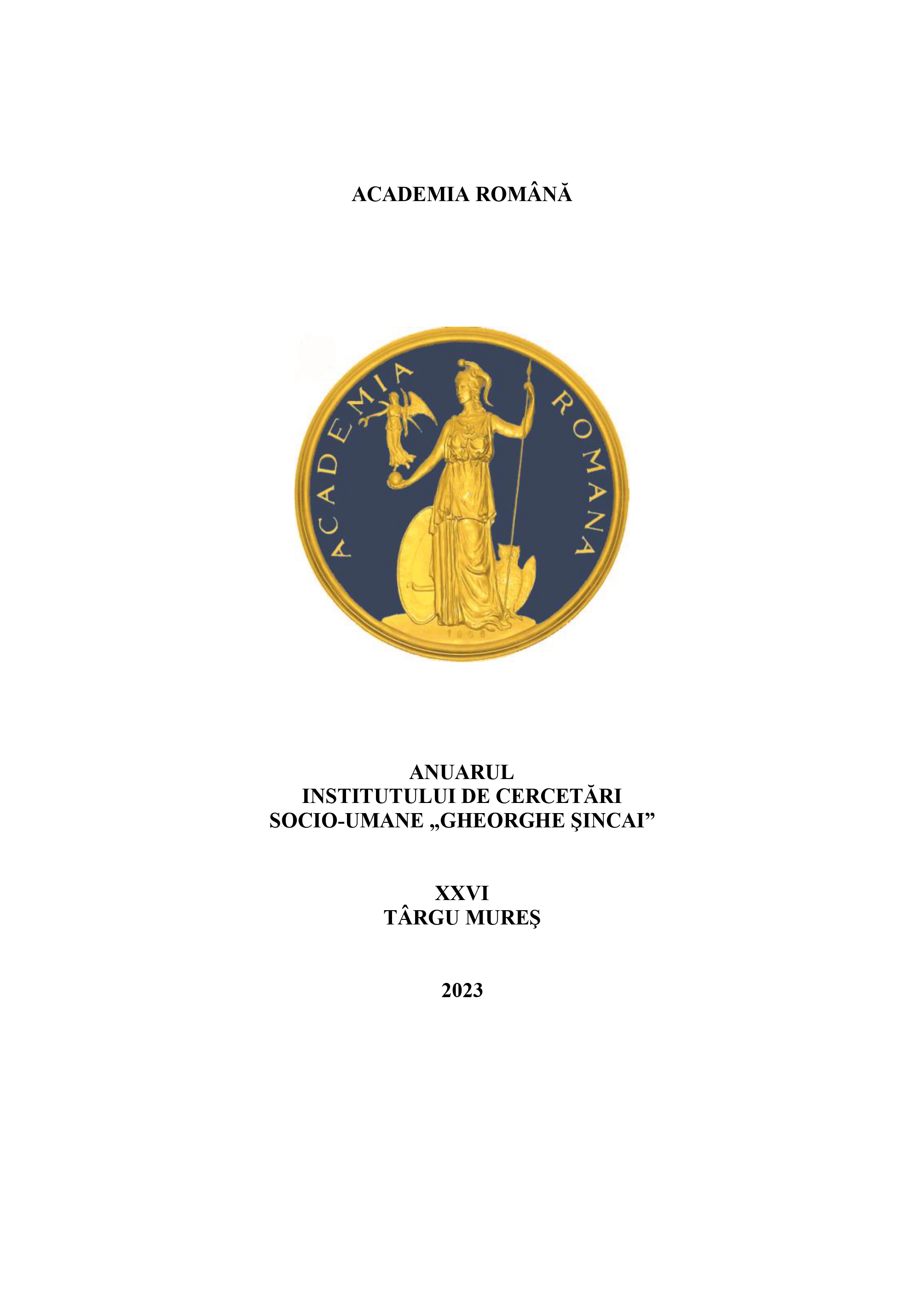ROBERTA AT THE CAPITOL AND ROXY: FASHION, CINEMA, AND MODERNITY IN INTERWAR BUCHAREST
ROBERTA AT THE CAPITOL AND ROXY: FASHION, CINEMA, AND MODERNITY IN INTERWAR BUCHAREST
Author(s): Sonia AndrasSubject(s): Cultural history, Diplomatic history, Social history, Interwar Period (1920 - 1939)
Published by: Institutul de Cercetări Socio-Umane Gheorghe Şincai al Academiei Române
Keywords: Roberta; Hollywood; fashion; Bucharest; Fred Astaire; Ginger Rogers; Irene Dunne;
Summary/Abstract: This paper follows the distribution, reception, and influence of Hollywood productions, using the particular case of the movie Roberta, starring Irene Dunne, Fred Astaire, and Ginger Rogers. It follows all stages from preparation, production, dissemination, and critique, and how they were seen from and reacted to in interwar Bucharest. The timeline focuses on the mid-1930s and two-three years before and after. Owing to the difficulties experienced by cinema studios on both sides of the Atlantic and the impending financial crisis in Hollywood, the movie had to rely on the popular Fred Astaire and Ginger Rogers pair. Because of this change, the original story was modified to fit the two dancing stars, promising more of a Fred and Ginger extravaganza than a typical romantic musical. Because Roberta did not follow the Fred and Ginger formula, it was soon overtaken by the pair’s largest success, Top Hat, released roughly a year later and has remained largely ignored. The movie was first shown in Bucharest seven months after its initial release in March 1935, at the cinemas Capitol and Roxy, then American, and, finally, Orfeu, until early 1937. Movie reviews and reactions abounded in the general and specialized press, especially in 1936. Beyond its perceptible flaws in plot coherence and expected cinematic experience, Roberta can now be viewed as the closest snapshot into mid-1930s realities, from the level of the story, its modifications from the original informed by financial and censorship reasonings, the necessary promotional language and actions, and its reception, focusing on interwar Bucharest. It can provide valuable social, cultural, aesthetic, and even political clues about the United States, Hollywood in particular, and 1930s Bucharest in its modernity, cosmopolitanism, or fashion-consuming aspects.
Journal: Anuarul Institutului de Cercetări Socio-Umane »Gheorghe Şincai« al Academiei Române
- Issue Year: 26/2023
- Issue No: 26
- Page Range: 163-185
- Page Count: 23
- Language: English

